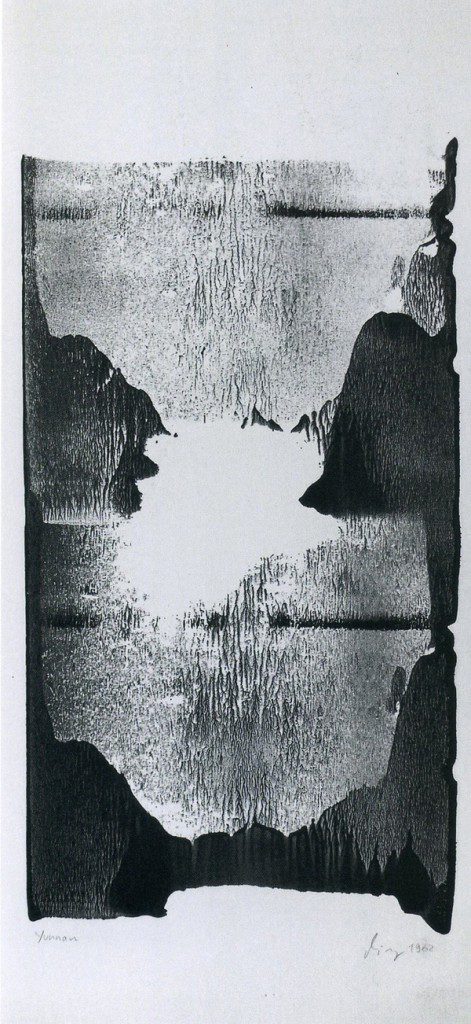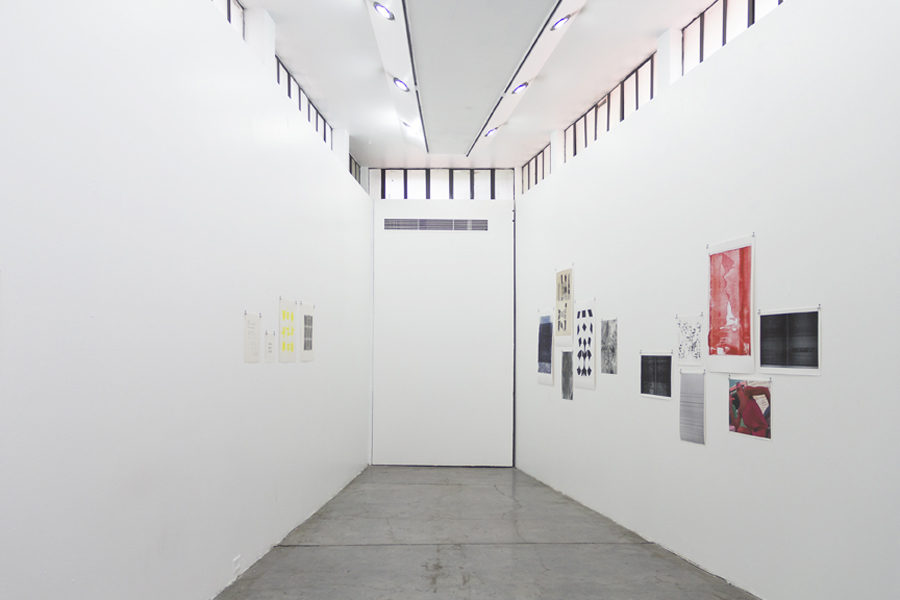Hansjörg Mayer (Stuttgart, Germany, 1943) inherited the printing trade from his father and grandfather. Since he was 10 years old, Mayer would stop by the Staib & Mayer print shop (founded by his father in 1952) on his way home from school to play, imagine and to learn the family trade.
Some time later, his expertise led Mayer to use the machines in different ways, taking the discards (like the dry overlays that are removed to clean the plates or the rollers eaten away by solvents) to create abstract views. At the shop, the images brought forth the possibilities of a universal language, forms that were open to interpretation; although he excluded figures, Hansjörg Mayer created landscapes. From these exercises, the Yunnan series (1962) was created where, without imitating but with the intuition of a magician, he would experiment with specific conditions from which the marvel of the art would emerge; despite using tools to create his infinite work, Mayer brings his unique aura to this “democratic medium”.

Through an expertly crafted production process, Mayer takes advantage of opportunities of chance. The fortuitous nature is not mere accident or absolute chaos, rather it is a revelation. Mayer openly courts uncertainty and randomness.
A landscape is a way of looking at the outside world, of exploring space. Augusto de Campos, the Brazilian concrete poet, said that Hansjörg Mayer was a “tipófago”, that he would “live off” of typography, interpreting the world through letters. Since 1963, Mayer has edited portfolios of concrete poetry and, in fact, it was through this work that he met Mathias Goeritz, representative of the movement in Mexico and creator of the El Eco Experimental Museum. In this work, he interpreted the writing of poets with Futura typography, reducing this to basic forms like circles and lines, the basis of his penchant for neutrality.

In his work as an artist, typography is a semiotic medium in and of itself. Since the late 1950’s, Mayer has been working with typoems, graphic configurations that use the color, overlay and the distribution of elements to draw meanings. Once again, Mayer has transformed the press into an instrument with which to play or interpret type erratically. The result: dynamic sequences that detach from classic poetic linearity to give a sense of movement; some characters glide to leave shadows and streaks on the page, a calligraphic feeling, and other experiments lead to optical, kinetic poems and with visual effects.

Mayer has used various techniques to print his work, such as linotype, monotype, offset printing, lithograph, letterpress, photography and even film, and uses his extensive knowledge to create random fragments and experimental landscapes.
As an editor, Mayer has worked on portfolios, monographs, photography and artist’s books with various creators (in addition to the concrete poets), such as Dieter Roth, Jim Dine and Richard Hamilton, among others. For Mayer, a book can be something that you fold and unfold, a container, a sculpture or something that is completely flat. He has also worked on various traditional publications on ethnographic and art of Africa and Asia ancient cultures.